Henna tattoos offer a stunning and temporary form of body art, but Are Henna Tattoos Waterproof? At tattooat.com, we explore the world of henna, examining its water resistance, longevity, and application techniques, providing you with insights into temporary body art, skin art, and natural dyes. Discover the secrets to making your henna designs last longer and learn about the different types of henna available.
1. What Are Henna Tattoos and How Do They Work?
Henna tattoos are temporary skin decorations created using a paste made from the henna plant. The lawsone molecules in henna bind to the proteins in your skin, creating a stain that lasts for a few weeks.
Henna tattoos, also known as mehndi, are a form of body art with deep cultural roots, particularly in South Asia, the Middle East, and Africa. The art of henna involves applying a paste made from the powdered leaves of the henna plant (Lawsonia inermis) to the skin, creating intricate designs that stain the skin a reddish-brown color. This temporary form of body art has been practiced for thousands of years and holds significant cultural and ceremonial importance.
The henna plant contains a dye molecule called lawsone, which is responsible for the staining effect. When henna paste is applied to the skin, the lawsone molecules bind to the proteins in the outer layers of the skin, resulting in a temporary tattoo. The depth and intensity of the stain depend on several factors, including the quality of the henna powder, the preparation of the paste, the duration the paste is left on the skin, and the individual’s skin type.
1.1. The Science Behind Henna Staining
The staining process involves the lawsone molecules in henna binding to proteins in the skin, creating a temporary color change. According to research from Portland State University’s Art Department, in July 2023, the strength of the stain depends on the henna quality and application time.
1.2. Traditional vs. Modern Henna
Traditional henna uses natural ingredients, while modern versions may include additives to alter the color or application. Always ensure the henna is safe for skin use, especially avoiding black henna, which can cause severe reactions.
2. Are Henna Tattoos Waterproof? The Truth About Water Resistance
Natural henna tattoos are not waterproof. While the stain penetrates the skin, prolonged exposure to water can fade the design faster.
While natural henna tattoos are beautiful and long-lasting to a degree, they are not waterproof in the traditional sense. Prolonged exposure to water can indeed cause the henna stain to fade more quickly. Think of it like this: the henna dye sits on the upper layers of your skin, and continuous soaking can lift the dye molecules away, reducing the intensity and longevity of the design. However, this doesn’t mean you need to avoid water altogether. With proper care, you can still enjoy your henna tattoo and maintain its vibrancy even with regular handwashing or showering.
2.1. How Water Affects Henna
Water can cause the henna stain to fade more quickly, especially with frequent exposure.
2.2. Protecting Your Henna Tattoo from Water
Applying a barrier like coconut oil or beeswax balm before water exposure can help protect the design.
2.3. What is Black Henna and Why to Avoid It
Black henna contains a chemical dye called paraphenylenediamine (PPD), which can cause severe skin reactions, blistering, and permanent scarring. It is not safe for use on the skin.
3. How to Make Henna Tattoos Last Longer
To extend the life of your henna tattoo, avoid prolonged water exposure, moisturize regularly, and consider using a sealant.
Here’s how to keep your henna tattoo looking fresh:
- Avoid Soaking: Limit time in water to prevent fading.
- Moisturize: Keeps skin hydrated, helping the stain last.
- Seal It: Use balms or oils to protect the design.
3.1. Pre-Application Tips
Exfoliating the skin before applying henna can help the stain penetrate deeper and last longer.
3.2. Post-Application Care
After applying henna, keep the paste on for as long as possible—ideally several hours—to ensure a deep stain.
3.3. The Role of Moisturizing
Regular moisturizing with natural oils helps to keep the skin hydrated, which prevents the henna stain from fading quickly.
4. Different Types of Henna and Their Water Resistance
Not all henna is created equal; different types and additives can affect how well the design holds up against water.
4.1. Natural Henna
Natural henna is derived purely from the henna plant and typically creates a reddish-brown stain.
4.2. Jagua Henna
Jagua henna is derived from a tropical fruit and produces a bluish-black stain, offering an alternative to traditional henna.
4.3. Temporary Colored Henna Tattoos
Temporary colored henna tattoos use FDA-approved ingredients and stick to the top layer of the skin, allowing for easy removal and instant water resistance.
5. Step-by-Step Guide to Applying Henna Tattoos
Applying henna involves several steps, from preparing the skin to caring for the design after application.
5.1. Preparing the Skin
Start with clean, dry skin. Exfoliate the area to remove dead skin cells, which can prevent the henna from staining properly.
5.2. Applying the Henna Paste
Use a cone or applicator to create your design. Apply the henna paste carefully and precisely to achieve the desired pattern.
5.3. Aftercare Instructions
Once the henna paste has dried, keep it on for as long as possible. Avoid washing the area immediately; instead, scrape off the dried paste and apply a natural oil.
6. Henna Tattoo Designs and Inspiration
Henna designs range from simple patterns to intricate artwork, reflecting cultural traditions and personal expression.
6.1. Traditional Henna Patterns
Traditional henna patterns often include floral motifs, paisleys, and geometric shapes, each carrying symbolic meanings.
6.2. Modern Henna Art
Modern henna art incorporates contemporary designs and personalized elements, blending traditional techniques with modern aesthetics.
6.3. Finding Design Inspiration
Explore online resources, cultural events, and tattooat.com for inspiration and ideas for your next henna design.
7. Henna Tattoos vs. Permanent Tattoos
Henna tattoos offer a temporary alternative to permanent tattoos, providing a way to experiment with designs without a lifelong commitment.
7.1. The Benefits of Henna
Henna tattoos are temporary, painless, and offer a way to express creativity without the permanence of traditional tattoos.
7.2. The Appeal of Permanent Tattoos
Permanent tattoos offer a lasting form of self-expression, with designs that can hold deep personal meaning.
7.3. Making the Right Choice
Consider your personal preferences, lifestyle, and commitment level when deciding between henna and permanent tattoos.
8. The Cultural Significance of Henna
Henna holds deep cultural and ceremonial importance in many societies, often used in weddings, festivals, and other celebrations.
8.1. Henna in Weddings
In many cultures, henna is an essential part of wedding ceremonies, symbolizing good luck, joy, and beauty for the bride.
8.2. Henna in Festivals
Henna is also used in various festivals and celebrations, adding a festive and decorative element to the occasion.
8.3. Respecting Cultural Traditions
When using henna, it’s important to respect its cultural origins and traditions, acknowledging its significance and history.
9. Common Misconceptions About Henna Tattoos
There are several common misconceptions about henna tattoos, particularly regarding their safety and longevity.
9.1. Henna Allergies
While rare, some individuals may be allergic to natural henna. Always perform a patch test before applying henna extensively.
9.2. The Lifespan of a Henna Tattoo
Henna tattoos typically last between one to three weeks, depending on skin type, aftercare, and the quality of the henna used.
9.3. Debunking Myths
Avoid misinformation by consulting reliable sources like tattooat.com for accurate information on henna and its application.
10. How to Choose a Henna Artist
Selecting a reputable henna artist is crucial for ensuring a safe and beautiful henna experience.
10.1. Researching Artists
Look for artists with positive reviews, a portfolio of their work, and a commitment to using natural, safe henna products.
10.2. Checking Credentials
Ensure the artist is knowledgeable about henna safety and follows proper hygiene practices to prevent skin reactions.
10.3. Asking the Right Questions
Inquire about the type of henna used, the ingredients in the paste, and the artist’s experience and training.
11. DIY Henna vs. Professional Application
Deciding whether to apply henna yourself or hire a professional depends on your skill level, design complexity, and desired outcome.
11.1. The Pros and Cons of DIY Henna
DIY henna allows for creativity and cost savings but requires skill and attention to detail to achieve professional-looking results.
11.2. The Benefits of Professional Application
Professional henna artists offer expertise, precision, and access to high-quality materials, ensuring a stunning and long-lasting design.
11.3. Making the Decision
Consider your comfort level and the complexity of the design when deciding between DIY and professional henna application.
12. Henna Tattoo Aftercare Products
Proper aftercare is essential for prolonging the life and vibrancy of your henna tattoo.
12.1. Natural Oils
Natural oils like coconut, olive, and sesame oil help to moisturize the skin and protect the henna stain from fading.
12.2. Beeswax Balms
Beeswax balms create a protective barrier over the henna design, preventing water and other elements from affecting the stain.
12.3. Avoiding Harsh Chemicals
Avoid using harsh soaps, exfoliants, and chemicals on the henna area, as these can accelerate fading.
13. Trends in Henna Tattoo Art
Henna tattoo art is constantly evolving, with new trends and styles emerging to reflect changing tastes and cultural influences.
13.1. White Henna
White henna is a popular trend that uses a non-henna-based adhesive and cosmetic-grade body paint to create a temporary white design on the skin.
13.2. Glitter Henna
Glitter henna adds sparkle and glamour to traditional henna designs, often used for special occasions and festive events.
13.3. Geometric Patterns
Geometric patterns are a modern trend in henna art, featuring clean lines, symmetry, and abstract designs.
14. The Environmental Impact of Henna
Henna is a natural and eco-friendly alternative to synthetic dyes and temporary tattoos, with minimal environmental impact.
14.1. Sustainable Practices
Choose henna products from sustainable sources and support artists who use eco-friendly practices.
14.2. Biodegradability
Natural henna is biodegradable and doesn’t contribute to environmental pollution, making it a responsible choice for body art.
14.3. Supporting Eco-Friendly Brands
Support brands that prioritize sustainability and ethical sourcing in their henna production practices.
15. Addressing Henna Safety Concerns
Addressing safety concerns ensures a positive and risk-free henna experience.
15.1. Identifying Safe Henna Products
Look for henna products that are certified natural and free from harmful additives like PPD.
15.2. Patch Testing
Always perform a patch test before applying henna extensively to check for allergic reactions.
15.3. Recognizing Allergic Reactions
Be aware of the symptoms of allergic reactions, such as itching, redness, and swelling, and seek medical attention if necessary.
16. Henna Tattoos for Special Occasions
Henna tattoos add a touch of elegance and cultural significance to special occasions like weddings, festivals, and parties.
16.1. Weddings
Henna is an integral part of wedding celebrations in many cultures, symbolizing joy, beauty, and good fortune for the bride.
16.2. Festivals
Henna is used to adorn hands and feet during festivals, adding a festive and decorative element to the celebrations.
16.3. Parties
Henna tattoos are a fun and unique addition to parties, providing guests with a temporary and artistic form of self-expression.
17. The Future of Henna Art
The future of henna art looks bright, with ongoing innovations, evolving trends, and a growing appreciation for its cultural significance.
17.1. Innovations in Henna Techniques
Explore new techniques and technologies that enhance the precision, longevity, and safety of henna application.
17.2. Growing Appreciation
Celebrate the growing appreciation for henna art as a form of cultural expression and artistic creativity.
17.3. Educational Resources
Promote educational resources and workshops that teach about the history, traditions, and safe practices of henna art.
18. Henna Tattoos in Pop Culture
Henna tattoos have made their way into pop culture, embraced by celebrities and featured in fashion magazines, showcasing their versatility and appeal.
18.1. Celebrity Influence
Celebrities often sport henna tattoos at events and in photoshoots, popularizing the art form and inspiring fans to try it themselves.
18.2. Fashion Features
Fashion magazines feature henna designs in editorials, highlighting their beauty and cultural significance.
18.3. Social Media Trends
Social media platforms showcase the latest trends in henna art, with artists and enthusiasts sharing their designs and techniques.
19. Traveling with Henna: Tips and Considerations
If you’re traveling with henna, there are several tips and considerations to keep in mind.
19.1. Packing Henna Supplies
Pack your henna supplies carefully to prevent spills and damage during travel.
19.2. Cultural Sensitivity
Be mindful of local customs and traditions when wearing henna in different countries.
19.3. Airport Security
Check with airport security regarding any restrictions on carrying henna paste or powders in your luggage.
20. Henna Tattoo Removal Options
While henna tattoos are temporary, there may be times when you want to remove them sooner rather than later.
20.1. Natural Remedies
Natural remedies like lemon juice, baking soda, and exfoliating scrubs can help to fade henna stains gradually.
20.2. Professional Removal
Professional tattoo removal services can lighten or remove henna stains more quickly, using techniques like laser treatment.
20.3. Understanding the Process
Be aware that complete removal of henna stains may take time and multiple treatments, depending on the intensity and age of the design.
21. Exploring Henna Body Art in Portland, USA
Portland, Oregon, is a vibrant hub for henna body art, offering a diverse range of talented artists and studios.
21.1. Local Artists
Discover local henna artists in Portland known for their skill, creativity, and commitment to using safe, natural henna products.
21.2. Henna Studios
Explore henna studios in Portland that offer a welcoming and professional environment for henna application.
21.3. Community Events
Attend community events and workshops in Portland that celebrate henna art and culture.
Address: 1825 SW Broadway, Portland, OR 97201, United States. Phone: +1 (503) 725-3000. Website: tattooat.com.
22. Common Questions About Henna Tattoos and Water
Here are some frequently asked questions about henna tattoos and their water resistance:
22.1. Will Swimming Ruin My Henna Tattoo?
Swimming can cause the henna stain to fade more quickly, especially with prolonged exposure to chlorinated water.
22.2. Can I Shower with a Henna Tattoo?
Yes, you can shower with a henna tattoo, but try to minimize the time the henna area is exposed to water and avoid using harsh soaps.
22.3. How Soon After Application Can I Get My Henna Tattoo Wet?
It’s best to wait at least 12-24 hours after application before getting your henna tattoo wet, to allow the stain to fully develop.
22.4. What Happens If My Henna Tattoo Gets Wet Immediately After Application?
If your henna tattoo gets wet immediately after application, the stain may not develop properly, resulting in a lighter or uneven design.
22.5. Does Saltwater Affect Henna Tattoos Differently Than Freshwater?
Saltwater can also cause henna stains to fade more quickly, similar to freshwater and chlorinated water.
22.6. Is It Okay to Wash Dishes with a Henna Tattoo?
Washing dishes can expose your henna tattoo to water and soap, so it’s best to wear gloves or apply a protective balm before doing so.
22.7. How Do I Keep My Henna Tattoo Dry While Showering?
You can apply a waterproof bandage or wrap to keep your henna tattoo dry while showering.
22.8. Can I Use a Hair Dryer to Dry My Henna Tattoo After It Gets Wet?
Using a hair dryer on a low setting can help to dry your henna tattoo after it gets wet, but be careful not to overheat the area.
22.9. What Are Some Other Ways to Protect My Henna Tattoo from Water?
Other ways to protect your henna tattoo from water include applying a layer of coconut oil or beeswax balm before water exposure.
22.10. How Long Will My Henna Tattoo Last If I’m Careful About Water Exposure?
If you’re careful about water exposure and follow proper aftercare instructions, your henna tattoo can last up to three weeks.
23. Maximizing the Vibrancy of Your Henna Tattoo: Advanced Techniques
For those looking to maximize the vibrancy and longevity of their henna tattoos, there are several advanced techniques to consider.
23.1. Lemon-Sugar Sealant
Applying a lemon-sugar sealant to the dried henna paste can help to keep it moist and in contact with the skin for a longer period, resulting in a deeper stain.
23.2. Heat Application
Applying gentle heat to the henna paste, using a hairdryer on a low setting or sitting in a warm room, can help to open the pores and allow the henna to penetrate deeper.
23.3. Essential Oil Blends
Using specific essential oil blends in the henna paste can enhance the staining process, with oils like lavender, tea tree, and eucalyptus known for their beneficial properties.
24. The Art of Henna: More Than Just a Tattoo
Henna is more than just a temporary tattoo; it’s a form of artistic expression with deep cultural roots and symbolic meanings.
24.1. Self-Expression
Henna allows for a unique form of self-expression, with designs that reflect personal style, beliefs, and cultural heritage.
24.2. Mindful Application
The application of henna can be a meditative and mindful process, allowing for relaxation and creativity.
24.3. Connecting with Culture
Wearing henna connects you with the rich cultural traditions and artistic heritage of communities around the world.
25. Future Trends in Henna Aftercare
As henna art continues to evolve, so too will the aftercare practices aimed at prolonging and enhancing the designs.
25.1. Natural Sealants
Expect to see more natural sealants and balms made from plant-based ingredients, offering a sustainable and eco-friendly approach to aftercare.
25.2. Personalized Aftercare Kits
Personalized aftercare kits tailored to specific skin types and henna designs will become more common, ensuring optimal results.
25.3. Technology Integration
Technology may play a role in future aftercare, with apps that provide reminders, track fading, and offer personalized tips for maintaining the design.
26. Overcoming Challenges with Henna Tattoos
Despite its beauty and cultural significance, there can be challenges associated with henna tattoos.
26.1. Fading Designs
Fading designs are a common frustration, but can be minimized with proper aftercare and techniques.
26.2. Allergic Reactions
Allergic reactions, though rare, can be severe and require immediate attention. Always perform a patch test before extensive application.
26.3. Uneven Staining
Uneven staining can occur due to various factors, including skin type, paste consistency, and application technique.
27. Henna and Skin Health: What You Need to Know
Understanding the relationship between henna and skin health is crucial for a safe and enjoyable experience.
27.1. Natural Henna Benefits
Natural henna has been shown to have antimicrobial and anti-inflammatory properties, making it beneficial for skin health.
27.2. Black Henna Risks
Black henna, containing PPD, can cause severe skin reactions, blistering, and permanent scarring. Avoid it at all costs.
27.3. Consulting Dermatologists
If you have sensitive skin or a history of allergic reactions, consult with a dermatologist before using henna.
28. Henna Tattoo Workshops and Education
Participating in henna tattoo workshops and educational programs can deepen your understanding and appreciation of this art form.
28.1. Learning Techniques
Workshops provide hands-on training in henna application techniques, design principles, and safety practices.
28.2. Cultural Immersion
Educational programs offer insights into the cultural history, traditions, and significance of henna in different communities.
28.3. Community Building
Workshops and programs foster a sense of community among henna enthusiasts, artists, and cultural practitioners.
29. Ethical Considerations in Henna Art
Ethical considerations are paramount in henna art, ensuring respect for cultural traditions, safety practices, and environmental sustainability.
29.1. Cultural Appropriation
Avoid cultural appropriation by respecting the origins, meanings, and traditions of henna art.
29.2. Safe Practices
Adhere to safe practices in henna application, using natural products, performing patch tests, and following hygiene guidelines.
29.3. Sustainable Sourcing
Support sustainable sourcing of henna products, choosing brands that prioritize ethical and environmental practices.
30. Embracing the Beauty and Artistry of Henna
Embracing the beauty and artistry of henna involves appreciating its cultural significance, artistic expression, and potential for self-discovery.
30.1. Expressing Yourself
Henna offers a unique way to express yourself, with designs that reflect your personality, beliefs, and cultural heritage.
30.2. Connecting with Culture
Wearing henna connects you with the rich cultural traditions and artistic heritage of communities around the world.
30.3. Celebrating Beauty
Celebrate the beauty and artistry of henna as a form of self-expression, cultural connection, and creative celebration.
Ready to explore the world of henna tattoos? Visit tattooat.com for design inspiration, artist directories, and essential information to make your henna experience unforgettable. Discover stunning designs, connect with talented artists, and dive into the rich cultural history of henna, all in one place.
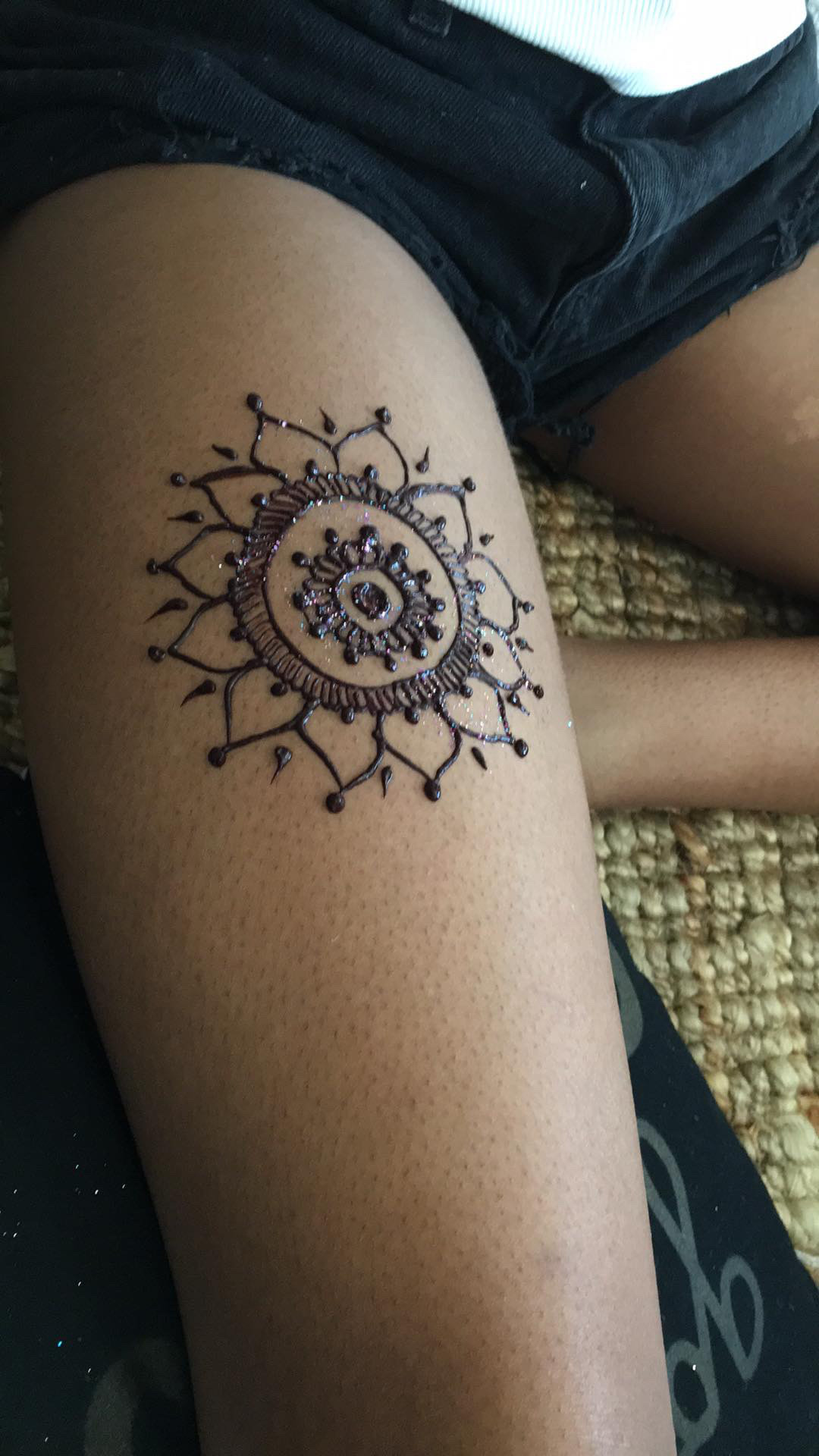 Henna tattoo design on hand
Henna tattoo design on hand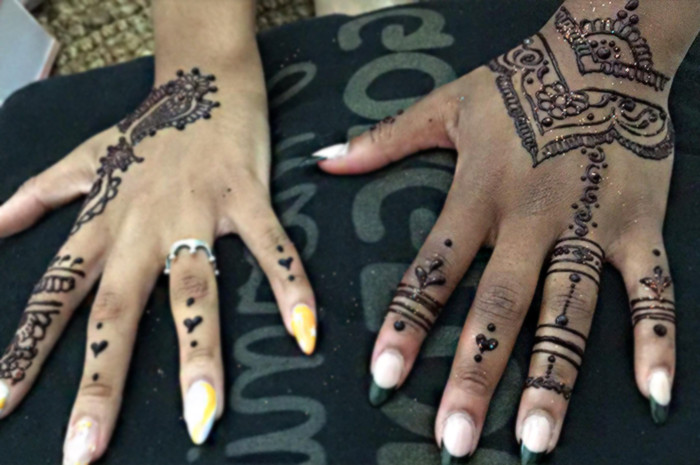 Elaborate henna tattoo pattern
Elaborate henna tattoo pattern Henna tattoo event setup
Henna tattoo event setup Henna paste preparation
Henna paste preparation Temporary colored henna tattoos
Temporary colored henna tattoos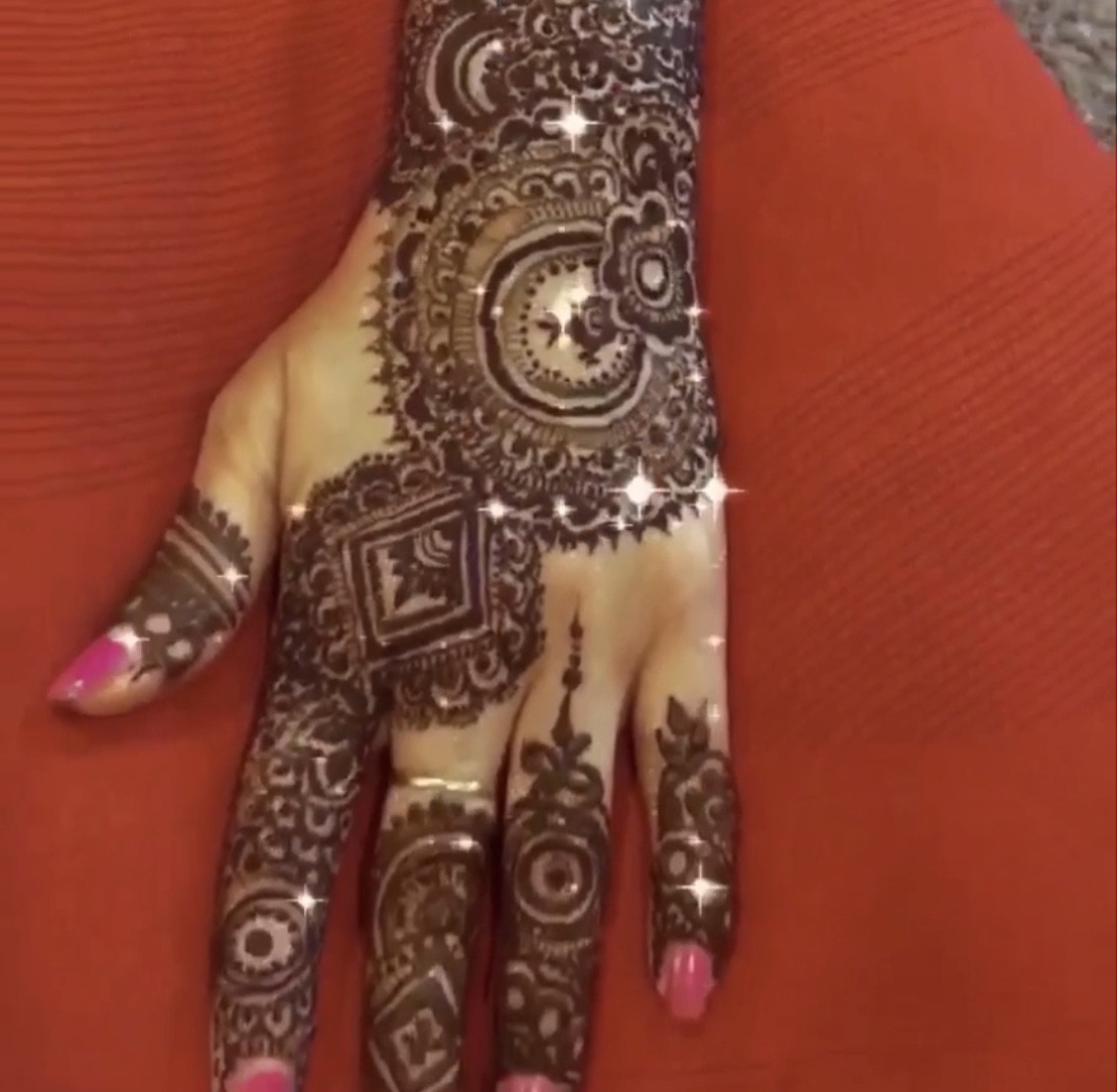 Henna tattoo on arm for party
Henna tattoo on arm for party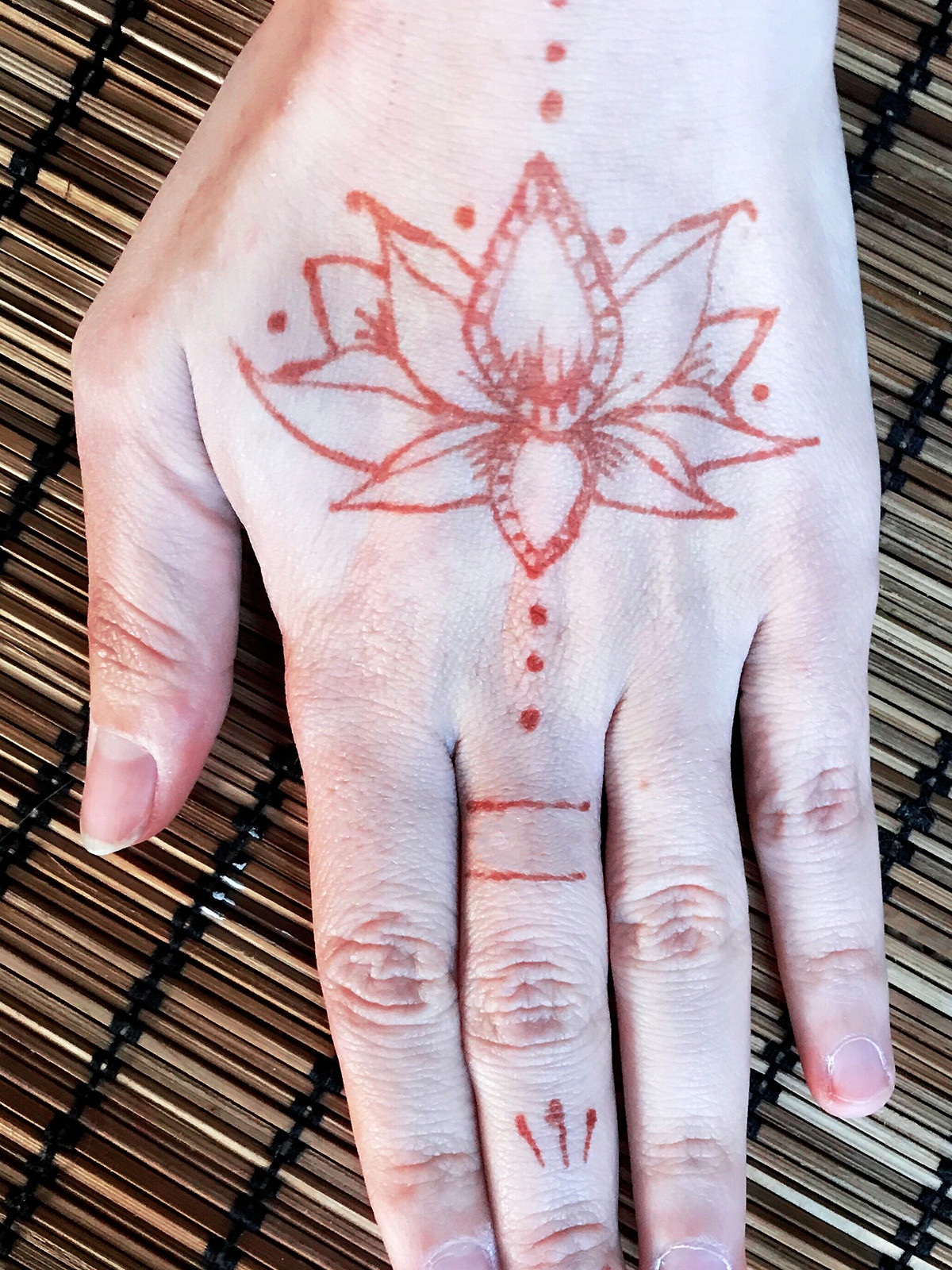 Henna tattoo sample
Henna tattoo sample Henna tattoos for children
Henna tattoos for children Henna tattoo for summer
Henna tattoo for summer Henna fun for all ages
Henna fun for all ages Henna designs for women
Henna designs for women Henna art for parties
Henna art for parties Henna designs for events
Henna designs for events Henna tattoo designs
Henna tattoo designs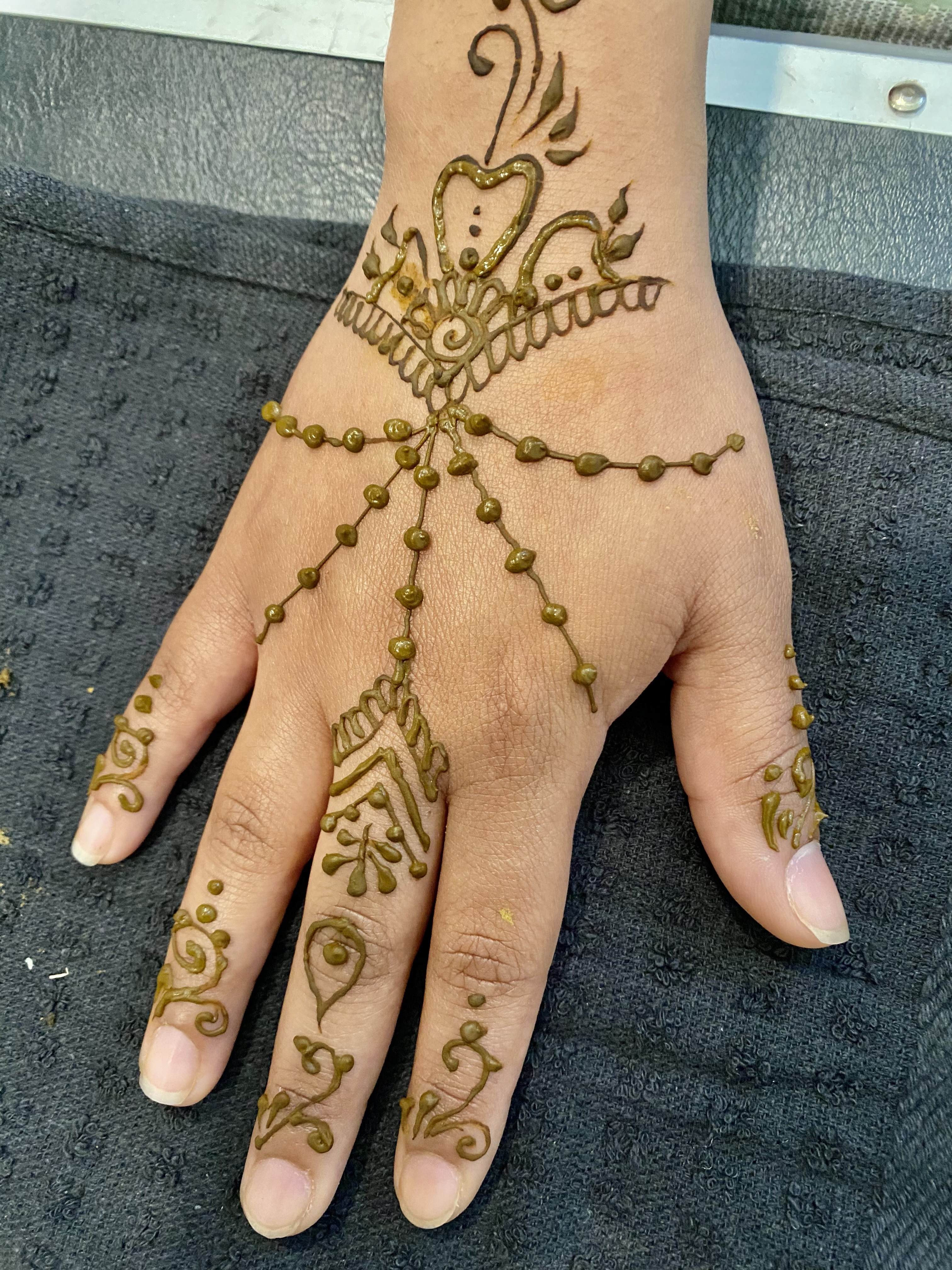 Party henna art
Party henna art Henna for party guests
Henna for party guests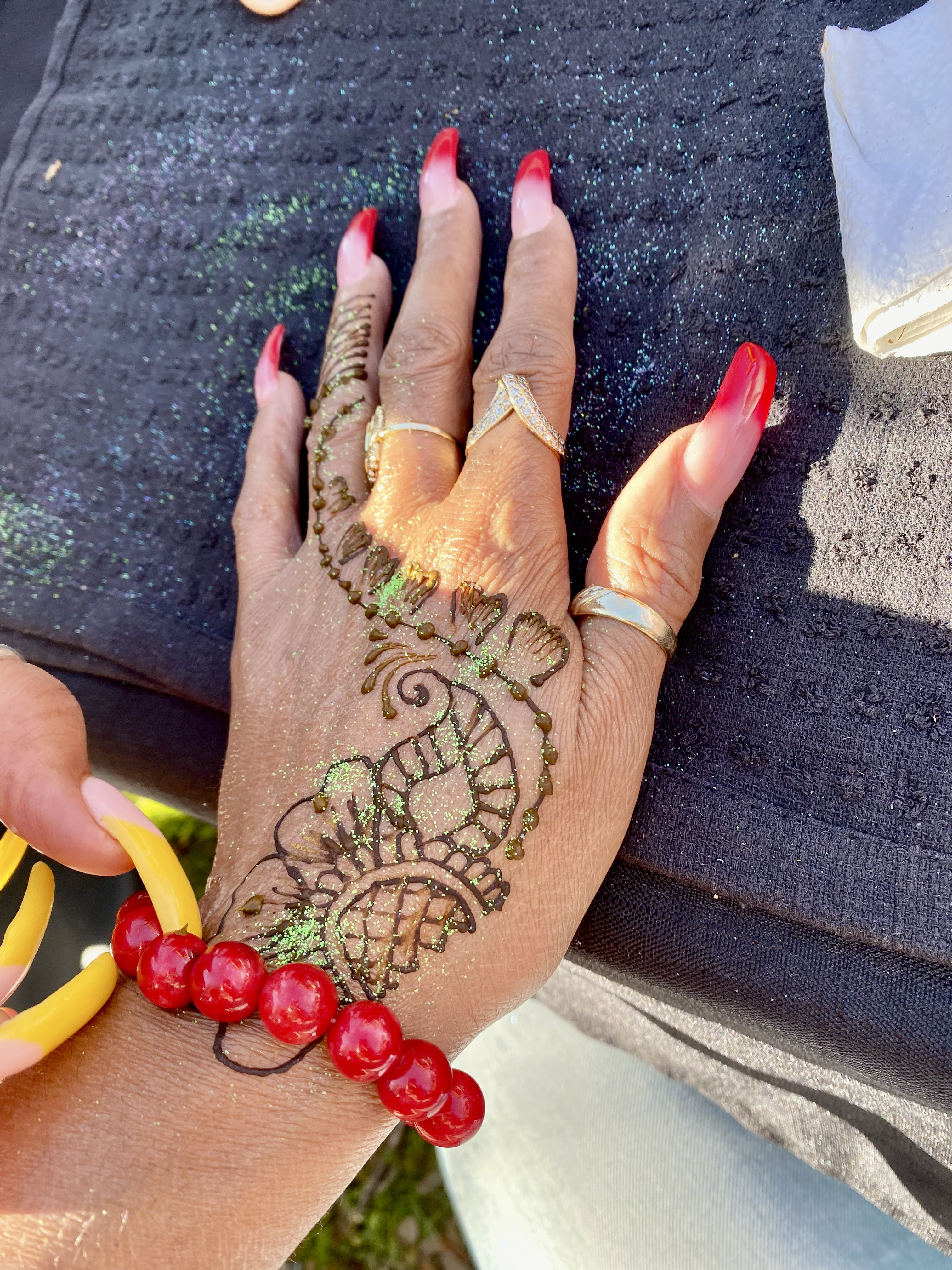 Henna for parties
Henna for parties Henna tattoo styles
Henna tattoo styles Henna tattoo artist
Henna tattoo artist
